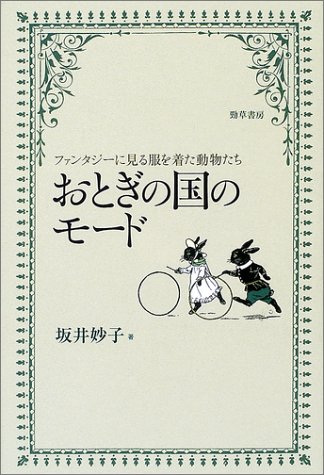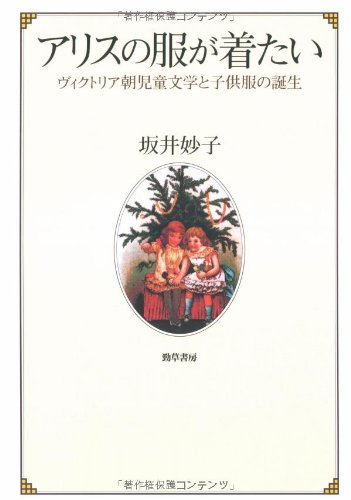15 0 0 0 OA 防水性コートの発達に見る新しいダンディズム : シャーロック・ホームズ作品を例に
- 著者
- 坂井 妙子
- 出版者
- 一般社団法人 日本家政学会
- 雑誌
- 日本家政学会誌 (ISSN:09135227)
- 巻号頁・発行日
- vol.67, no.12, pp.673-681, 2016 (Released:2016-12-22)
- 参考文献数
- 52
This essay uncovers new sartorial roles of men's waterproof coats that emerged in late Victorian and Edwardian England. Since the 1820s, England had witnessed remarkable improvements of waterproof cloth. Its primary purpose was to protect the body from the elements, though in the late nineteenth century, London tailors developed fashionable waterproof coats for gentlemen. By the end of the century, such coats became so familiar as to be depicted in fiction. One remarkable example is Sherlock Holmes, a famous fictional detective of Sir Arthur Conan Doyle, who wears one in the stories. Taking his coat as an illustrative example of the period, this essay focuses on three main topics: 1) the correlation between the development of waterproof coats and class distinction in the late Victorian and Edwardian periods; 2) the role of Holmes's clothes in the stories; and 3) defining Holmes' waterproof as a contemporary fashion for gentlemen. Holmes' waterproof functions not only to reinforce his image as an intellectual and proficient detective, but also as a respectable agent who modernizes the dress code for gentleman. This is demonstrated as follows: 1) Investigating the development of waterproof coats of the periods reveals that the waterproof symbolized British industrial advancement, idealism of innovation, as well as middle-class respectability; 2) Holmes is an educated upper-middle-class gentleman, whose class-specific behavior and ideology are crystalized in his waterproof coat; 3) For middle-class men, being gentlemanly dressed and fashionable were always hard to achieve, because of the paucity of information and the intricacy of dress codes to observe. In such circumstances, Holmes in his waterproof serves as a denominator of the modern gentleman. Being functional, innovative, respectable, British and at the same time fashionable, his coat exemplifies how modern gentlemen should look.
7 0 0 0 OA ヴィクトリア朝イギリスにおける, あるメイドのファッション, ジェンダー, 職業観
- 著者
- 坂井 妙子
- 出版者
- 一般社団法人 日本家政学会
- 雑誌
- 日本家政学会誌 (ISSN:09135227)
- 巻号頁・発行日
- vol.69, no.3, pp.160-168, 2018 (Released:2018-04-05)
- 参考文献数
- 48
This essay focuses on a working-class woman, called Hannah Cullwick (1833-1901), and studies her ideas of fashion based on her diary. Hannah was a maid-of-all work since she was fourteen. In spite of her humble origin, she kept a diary between 1854 and 1873, because her secret lover, Arthur Munby (1828-1910), recommended her to do so. Munby was an upper-class author and poet to whom Hannah had a life-long relation. In her diary, she recorded her opinions of her works, numerous employers she served, her colleagues, and Munby. Her diary reveals that through her relation to Munby, Hannah cultivated her own ideas of gender, career and fashion. Throughout her service, she wore a humble working-dress. Even after her secret marriage to Munby in 1873, which financially enabled her to dress and behave like a lady, she determinedly wore the humble clothes of a lower servant. She self-approvingly noted her financial and mental independence through domestic service, while she pitied 'proudly' dressed middle-class ladies who engaged only feminine activities. Experiencing different social class behaviours and gender ideologies, Hannah found her humble working dress of cotton functioning as a sign of her financial and mental independence, pride of her service, and her identity as a working-class 'woman'. These ideas were definitely different from middle-class stereotypical assumptions of working-class women, or working-class women's standard reactions against them. Hannah's life-long relation to the upper-class man may not be a typical experience for a lower-class woman of the period. Unique her experiences and ideas may be, Hannah provides us a new understanding of women in this social segment, their career and gender identity through their dress.
3 0 0 0 OA 19世紀後半のイギリスにおけるミドルクラスの色彩コンプレックスとその克服法
- 著者
- 坂井 妙子
- 出版者
- 一般社団法人 日本家政学会
- 雑誌
- 日本家政学会誌 (ISSN:09135227)
- 巻号頁・発行日
- vol.65, no.10, pp.569-573, 2014 (Released:2015-01-01)
- 参考文献数
- 26
The British have long been ashamed of their sense of colour being significantly inferior to that of the French. In the latter half of the nineteenth century, however, British middle classes, whose economic powers increasingly impacted mainstream fashion, forged a series of new rules in order to overcome their inferior complex to the French. That is, instead of soiling the immorality of French fashion, British middle classes decided to use their self-avowedly superior intellectual power, diligence, enterprising as well as self-restraining dispositions in studying French taste and absorbing it. In addition, they applied their learned knowledge of colour into the branches of domestic industries such as the chemical dye industry. As the industries actually flourished toward the end of the nineteenth century, middle-class choice of colour in dress such as aniline dyed fabrics became associated with Englishness, presenting the most advanced industrial country in the world. By doing so, the middle classes became confident in their own sense of colour. To trace this process, the author uses popular fashion magazines, etiquette books, and theories of colour widely available on the market, all of whose core audience was the middle classes.
3 0 0 0 おとぎの国のモード : ファンタジーに見る服を着た動物たち
3 0 0 0 OA 19世紀イギリスにおける衣服と社会に関する研究
- 著者
- 坂井 妙子
- 出版者
- 一般社団法人 日本家政学会
- 雑誌
- 日本家政学会誌 (ISSN:09135227)
- 巻号頁・発行日
- vol.69, no.6, pp.399-406, 2018 (Released:2018-06-28)
- 参考文献数
- 44
- 著者
- 坂井 妙子
- 出版者
- 山野美容芸術短期大学
- 雑誌
- 山野研究紀要 (ISSN:09196323)
- 巻号頁・発行日
- vol.4, pp.25-36, 1996-03-25
豪華なフルコースがでる披露宴と三段重ねのケーキ,友人達のかける花吹雪に見送られてヨーロッパへハネムーンという結婚式のイメージは今では西洋だけでなく日本でさえ当たり前となっているが,結婚披露宴やハネムーンにまつわるこのような習慣は,実は意外に新しく19世紀末イギリスで確立した。そしてこの習慣の確立には中産階級が大きく関与したと考えられる。本論文ではヴィクトリア朝中産階級の経済力の向上,階級意識の変化および19世紀末に本格化したコマーシャリズムと技術革新が現代の結婚式の基礎をつくった,という視点から19世紀イギリス中産階級の結婚式を解釈する。カップルへの贈り物,結婚披露宴,ハネムーンに現われるヴィクトリア朝中産階級の価値観を考察すると共に,現代の贅沢ではあるが画一化された結婚式のルーツを探る。
2 0 0 0 OA <原著>ヴィクトリア朝の結婚式 : カップルへの贈り物,結婚披露宴,ハネムーン
- 著者
- 坂井 妙子
- 出版者
- 学校法人 山野学苑 山野美容芸術短期大学
- 雑誌
- 山野研究紀要 (ISSN:09196323)
- 巻号頁・発行日
- vol.4, pp.25-36, 1996-03-25 (Released:2019-06-10)
豪華なフルコースがでる披露宴と三段重ねのケーキ,友人達のかける花吹雪に見送られてヨーロッパへハネムーンという結婚式のイメージは今では西洋だけでなく日本でさえ当たり前となっているが,結婚披露宴やハネムーンにまつわるこのような習慣は,実は意外に新しく19世紀末イギリスで確立した。そしてこの習慣の確立には中産階級が大きく関与したと考えられる。本論文ではヴィクトリア朝中産階級の経済力の向上,階級意識の変化および19世紀末に本格化したコマーシャリズムと技術革新が現代の結婚式の基礎をつくった,という視点から19世紀イギリス中産階級の結婚式を解釈する。カップルへの贈り物,結婚披露宴,ハネムーンに現われるヴィクトリア朝中産階級の価値観を考察すると共に,現代の贅沢ではあるが画一化された結婚式のルーツを探る。
2 0 0 0 OA ヴィクトリア朝期に於ける衣服の色と顔色をめぐる諸問題
- 著者
- 坂井 妙子
- 出版者
- 社団法人日本家政学会
- 雑誌
- 日本家政学会誌 (ISSN:09135227)
- 巻号頁・発行日
- vol.60, no.1, pp.19-24, 2009-01-15
In this essay, I explore the reasons why Victorian women anxiously wanted their garments to be "suitable for their complexions." In the Victorian period, "good complexions" not only meant fair skin that was fine in texture, they also signified the purity, fineness, and gaiety of the women to whom they belonged. In other words, good complexions were vouchers for good characters. This judgment was sanctified by the popular belief that good complexions were "a gift of Nature," and therefore a true exposure of one's purity in mind. The same belief demoralized people having different complexions. Reddened and flushed faces, blotches, freckles, even tiny black spots and oily skin were categorized as bad complexions. Such dichotomy idealized fair skin, while unreasonably denunciated all other types. Furthermore, women with bad complexions were labeled as immoral, because it was firmly believed that bad complexions were the result of indulgence, intemperateness, and vanity. They were stamped on the face as indelible badges of such sins. Cosmetics were also severely criticized, since they were incompatible with the ideal of "a gift of Nature." Under social and moral pressures, women had to find a means to improve their complexions. One of only a few socially acceptable options was to select the right colors for their garments.
1 0 0 0 OA ヴィクトリア朝期に於ける衣服の色と顔色をめぐる諸問題
- 著者
- 坂井 妙子
- 出版者
- 一般社団法人 日本家政学会
- 雑誌
- 日本家政学会誌 (ISSN:09135227)
- 巻号頁・発行日
- vol.60, no.1, pp.19-24, 2009 (Released:2011-05-25)
- 参考文献数
- 29
In this essay, I explore the reasons why Victorian women anxiously wanted their garments to be "suitable for their complexions." In the Victorian period, "good complexions" not only meant fair skin that was fine in texture, they also signified the purity, fineness, and gaiety of the women to whom they belonged. In other words, good complexions were vouchers for good characters. This judgment was sanctified by the popular belief that good complexions were "a gift of Nature," and therefore a true exposure of one's purity in mind. The same belief demoralized people having different complexions. Reddened and flushed faces, blotches, freckles, even tiny black spots and oily skin were categorized as bad complexions. Such dichotomy idealized fair skin, while unreasonably denunciated all other types. Furthermore, women with bad complexions were labeled as immoral, because it was firmly believed that bad complexions were the result of indulgence, intemperateness, and vanity. They were stamped on the face as indelible badges of such sins. Cosmetics were also severely criticized, since they were incompatible with the ideal of "a gift of Nature." Under social and moral pressures, women had to find a means to improve their complexions. One of only a few socially acceptable options was to select the right colors for their garments.
1 0 0 0 OA ヴィクトリア朝の服飾表現にみる女性の自立と身体観に関する研究
The purpose of this project is to clarify Victorian women’s life and their body images by examining contemporary women’s magazines. Their importance has been widely recognized by researchers of historical dresses, but their main focuses have been on the styles and colours of fashionable dresses and dress accessories. Re-reading Victorian women’s magazines and re-focusing on the issues such as women’s actual life styles and their way of thinking will give us a new understanding of Victorian culture. This year, we examined British major fashion magazines issued in the nineteenth century to compile their outlines. As this task has been successful, we are ready to compile articles which illuminate women’s autonomy and their changing body images through this period.
1 0 0 0 アリスの服が着たい : ヴィクトリア朝児童文学と子供服の誕生
- 著者
- 坂井 妙子
- 出版者
- 一般社団法人 日本家政学会
- 雑誌
- 日本家政学会誌 (ISSN:09135227)
- 巻号頁・発行日
- vol.61, no.1, pp.37-44, 2010-01-15 (Released:2013-06-13)
- 参考文献数
- 57
In the late Victorian period, adorning one's dresses and parasols with blushing roses became increasingly popular with young British women. Although not an unusual rose species, blushing roses acquired a symbolic value, and were widely commercialized in the form of a book (Language of Flowers ). The language of blushing roses, “ If you love me, you will find me," emphasised ideal womanhood, so that the roses immediately became an acceptable fashion for young women. The blushing rose transformed itself from just another flower in the rose family to a symbol of young, modest, and beautiful women, as well as to fashionable commodities. This process was, however, complicated. It entailed the changing interpretation of facial expressions (blushing), the establishment of the symbolism of roses, the horticulture of roses, and the ways of representing ideal characters through one's dresses and accessories. This essay examines the ideological structures of blushing roses, and through it, explores Victorian desires and values.
- 著者
- 坂井 妙子
- 出版者
- 一般社団法人 日本家政学会
- 雑誌
- 一般社団法人日本家政学会研究発表要旨集
- 巻号頁・発行日
- vol.65, 2013
- 著者
- 坂井 妙子
- 出版者
- 国際服飾学会
- 雑誌
- 国際服飾学会誌 = Journal of the International Association of Costume (ISSN:09176551)
- 巻号頁・発行日
- no.29, pp.20-35, 2006-05-30
- 被引用文献数
- 3
- 著者
- 坂井 妙子
- 出版者
- 国際服飾学会
- 雑誌
- 国際服飾学会誌 = Journal of the International Association of Costume (ISSN:09176551)
- 巻号頁・発行日
- no.13, pp.44-64, 1996-12-20
1 0 0 0 20世紀前半のイギリス労働者階級のウエディングドレス
- 著者
- 坂井 妙子
- 出版者
- 日本女子大学
- 雑誌
- 日本女子大学紀要. 人間社会学部 (ISSN:09172076)
- 巻号頁・発行日
- vol.9, pp.115-130, 1998



